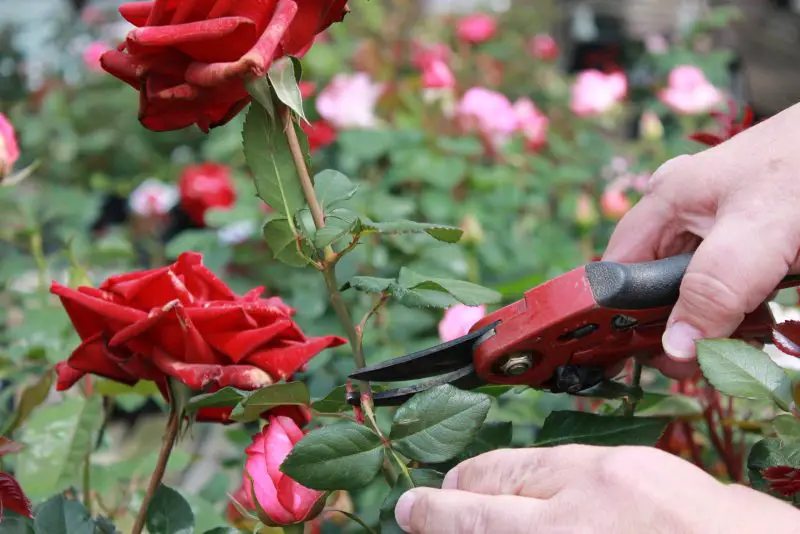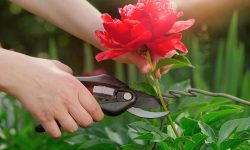Roses are often regarded as the queen of all flowers, offering timeless elegance and fragrant beauty in gardens worldwide. However, without proper care, even the most vigorous rose bushes can become overgrown, tangled, and less productive. One of the most essential techniques to maintain rose health and promote bigger, fuller blooms is pruning. While pruning might seem intimidating to beginners, mastering this skill can transform a struggling rose bush into a show-stopping centerpiece.
Pruning roses is not just about shaping your plant for visual appeal. It’s a critical horticultural practice that affects airflow, disease resistance, and bloom production. If done properly, pruning stimulates new growth, removes dead or diseased wood, and trains the plant into a productive framework. Whether you are cultivating hybrid teas, climbing roses, or floribundas, a careful approach to pruning can result in lusher foliage and more abundant blossoms.
Understanding when and how to prune roses is just as important as the act itself. Roses respond best to specific timing, tools, and cutting angles. With this comprehensive guide, you will gain the knowledge needed to confidently prune your roses to perfection.
The Importance of Rose Pruning

Pruning is more than just a gardening chore—it is a rejuvenation process for your rose plants. Every rosebush has a finite amount of energy it can distribute among its stems, leaves, and flowers. By removing dead, weak, or unproductive growth, you allow the plant to redirect its energy into producing healthier stems and more vibrant blooms.
Another significant benefit of pruning is disease prevention. Crowded and congested canes restrict airflow, creating a damp environment that fosters fungal infections such as black spot and powdery mildew. Pruning opens up the plant structure, increasing ventilation and sunlight penetration, which helps reduce the likelihood of disease outbreaks.
Moreover, a well-pruned rosebush is easier to manage and looks more attractive throughout the season. It becomes easier to identify pests, apply treatments, and harvest flowers for arrangements. Thus, pruning is not only vital for plant health but also for ease of maintenance and garden aesthetics.
Best Time to Prune Roses
Timing your pruning efforts correctly ensures you do not interrupt the plant’s natural growth cycle. In most climates, the ideal time to prune roses is in early spring, just as the buds begin to swell but before new growth emerges fully. This is usually when forsythia bushes bloom in your region, serving as a natural indicator.
In colder zones, waiting until the threat of hard frost has passed is essential. Pruning too early can expose the tender new growth to freeze damage, setting the plant back significantly. On the other hand, delaying pruning until after substantial growth appears can lead to more stress and potential breakage.
Some gardeners prefer to do a light cleanup in the fall by removing spent blooms and weak stems, but major structural pruning should be reserved for spring. This timing allows the plant to heal quickly and put its energy into robust growth during the active season.
Choosing the Right Tools
Using clean, sharp tools is essential for making precise cuts that heal quickly and minimize disease entry points. A good pair of bypass pruners is ideal for most rose pruning tasks, as they make clean cuts rather than crushing the stem. For thicker canes, a pair of loppers or even a pruning saw might be necessary.
It’s important to sanitize your tools before and during use, especially when moving from one plant to another. A simple solution of rubbing alcohol or diluted bleach can prevent the spread of fungal spores and bacteria. Keeping your tools in excellent condition not only makes the job easier but also protects your roses from infections.
Gloves specifically designed for rose care are also recommended. They should be sturdy enough to protect against thorns while allowing for flexibility and control. Investing in proper pruning equipment makes the process more efficient and enjoyable.
Identifying What to Remove
Successful pruning depends on understanding which parts of the rosebush need to be removed. Start by looking for dead wood, which is usually dark brown or black and brittle. These canes no longer contribute to the plant’s health and can attract pests or diseases if left untreated.
Diseased wood may show signs of discoloration, cankers, or unusual texture. Removing it as soon as possible prevents further spread and helps the plant focus on healing. You should also cut away any crossing branches that rub against each other, as this friction can create wounds that become infection sites.
Suckers are another type of growth you’ll want to eliminate. These shoots emerge from below the graft union and sap energy away from the main plant. Removing them at the base preserves the strength of the cultivated variety. Lastly, any spindly, thin canes that are unlikely to support flowers should be pruned back to stronger, thicker growth.
Understanding Cane Structure and Bud Eyes
Knowing how rose canes grow can help you decide where and how to make each cut. A rose stem is lined with small swellings known as bud eyes or nodes, from which new shoots will emerge. When making a cut, aim for an outward-facing bud eye, which encourages the plant to grow away from the center and maintain an open, vase-like structure.
Making cuts at a 45-degree angle helps water shed away from the wound, reducing the risk of rot. The sloped cut should be just above the bud—about a quarter of an inch—to avoid leaving too much stem that could decay. By consistently pruning above healthy bud eyes, you guide the shape and density of the bush as it regrows.
When assessing the overall structure, aim for balance and symmetry. This approach results in even growth distribution and better aesthetic appeal. Maintaining an open center allows light and air to penetrate, which improves overall plant vitality.
Pruning Techniques by Rose Type
Different rose varieties have unique growth patterns and respond best to specific pruning styles. Hybrid tea roses, for example, benefit from a more aggressive cut, typically down to three to five strong canes about 12 to 18 inches from the ground. This encourages large, individual blooms ideal for cutting gardens.
Floribundas, which produce clusters of flowers, require a slightly gentler touch. Retaining more stems at moderate lengths supports their natural tendency to flower in abundance. Focus on thinning rather than shortening, keeping the plant open yet full.
Climbing roses should be treated differently altogether. These plants bloom on older wood, so severe pruning can actually reduce flower production. Instead, remove only dead or damaged canes and train the remaining ones horizontally to encourage more lateral blooms. Prune lightly after the main flowering period to shape the plant without diminishing next season’s display.
How to Encourage Bigger Blooms
Maximizing bloom size begins with selective pruning. By reducing the number of stems and flower buds the plant must support, you concentrate its energy into producing fewer but more spectacular flowers. For roses grown for exhibition or cut arrangements, this method is especially beneficial.
Disbudding is a technique used to enhance bloom size by removing side buds along a stem and allowing only the terminal bud to develop. This ensures that all nutrients are funneled into a single flower, resulting in larger, more impressive blossoms.
Regular deadheading, or removing spent flowers, also stimulates continuous blooming. When you prune off old blooms just above a five-leaflet leaf, the plant redirects its efforts toward producing new flower buds instead of forming hips or seeds. This encourages a longer and more prolific blooming season.
Maintaining Plant Health Through Pruning
Consistent pruning supports a strong immune system for your rose bushes. Removing old and unproductive wood opens up space for vigorous new canes that are more resistant to pests and diseases. Over time, this creates a cycle of renewal that keeps your plants performing at their best.
Roses are heavy feeders, and pruning helps optimize nutrient allocation. By eliminating parts of the plant that no longer serve a purpose, you allow more resources to be delivered to the most productive areas. This improved circulation of nutrients supports both floral and vegetative growth.
Paying attention to the plant’s response after pruning is key. New shoots should emerge within a few weeks, indicating a healthy rebound. If growth appears stunted or discolored, inspect for signs of stress or infection and take corrective action quickly.
Seasonal Follow-Up and Aftercare
After completing your pruning, it’s important to provide appropriate follow-up care. Apply a balanced fertilizer to support new growth and help the plant recover from the energy expenditure. A slow-release formula is often best during early spring, while liquid feeds can be added later to boost flowering.
Water your rose bushes deeply and consistently, especially in the weeks following pruning. Hydration is crucial for cellular repair and new shoot development. Mulching around the base of the plant helps retain moisture and suppresses weeds that compete for nutrients.
Keep an eye on the pruned areas for signs of dieback or infection. If any cuts appear blackened or fail to heal, trim them back further to healthy tissue. Inspect the plant weekly and remove any suckers or unwanted shoots that may emerge as the rose regenerates.
Avoiding Common Pruning Mistakes
One of the most frequent errors in rose pruning is cutting too close or too far from a bud eye. Both scenarios can lead to dieback or an awkward branching pattern. Practicing the correct cut height and angle makes a noticeable difference in how the plant responds.
Over-pruning can also be detrimental. While roses tolerate significant trimming, removing too much foliage at once can stress the plant and reduce its ability to photosynthesize. Striking a balance between thinning and preserving structure is essential.
Another mistake is failing to sanitize tools. Dirty or rusty pruners can introduce disease to fresh cuts. Take the time to clean your blades before and after each session to ensure healthy healing and reduce cross-contamination.
Long-Term Impact of Good Pruning Practices
The effects of proper pruning extend far beyond a single season. Roses that are regularly pruned tend to live longer, bloom more frequently, and resist environmental stress more effectively. This ongoing care routine forms the foundation of a successful rose garden.
Pruned roses often produce more visually appealing growth patterns. Instead of a tangled mess of stems, you get graceful arches, balanced silhouettes, and healthier foliage. These aesthetic improvements make your garden a more enjoyable and rewarding space.
Perhaps most importantly, pruning fosters a deeper connection between gardener and plant. As you become attuned to your roses’ cycles and needs, you’ll develop the skill and intuition necessary to care for them in a more thoughtful and effective way. Each pruning session becomes an opportunity to nurture life, beauty, and resilience.
FAQ About How to Prune Roses for Bigger Blooms and Healthier Plants
What time of year should I prune my roses?
The best time to prune most rose varieties is in early spring, just as new buds begin to swell. This timing promotes vigorous growth and minimizes frost damage. Avoid pruning too early in winter or too late in the season when new growth has already begun.
How much of the rose bush should I cut back?
The amount to prune depends on the rose type. Hybrid teas can be cut back by about two-thirds to stimulate large blooms, while floribundas and shrub roses benefit from lighter thinning. Always focus on removing dead, diseased, and weak stems.
Will pruning roses really help them bloom more?
Yes, pruning directly contributes to increased blooming. By cutting away nonproductive or crowded growth, you encourage the plant to focus its energy on new shoots and flower production. Regular deadheading also extends the blooming season.
What is the best way to prune climbing roses?
Climbing roses should be pruned after flowering, with care taken not to remove the old canes that produce blooms. Focus on shaping, removing dead or weak wood, and training stems horizontally to encourage lateral flowering branches.
Can I prune roses in the fall?
While heavy pruning is best saved for spring, you can do a light cleanup in the fall to remove spent blooms and weak canes. Avoid significant cuts during this time to prevent cold damage during winter.
Conclusion: Prune Roses the Right Way for Lasting Beauty
Pruning roses may seem challenging at first, but with the right knowledge and timing, it becomes a rewarding part of rose care. By removing dead wood, shaping the plant, and encouraging healthy growth, you pave the way for bigger, more beautiful blooms and a stronger, more resilient rose bush. With consistent attention and thoughtful pruning, your roses will flourish season after season, adding color and charm to your garden year-round.






